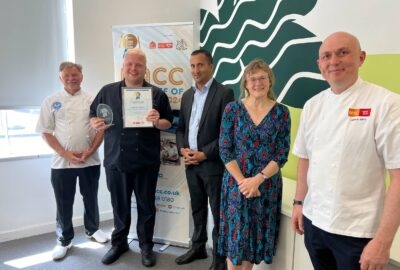Setting up a food education hub at a school provides students with the opportunity to learn about food by growing and cooking it. The hub not only has educational benefits but can also generate additional income for the school.
Charity Chefs in Schools has developed a free toolkit to help schools create their own food education hub. Funded by Clarion Housing Group’s William Sutton Prize, it covers everything from starting small scale projects such as vegetable beds and firepits to state-of-the-art cookery classrooms. There’s also information about fundraising and crowdfunding the project.
The toolkit pulls together the knowledge and experience gathered during the creation of the Hackney School of Food in London, established by the LEAP Federation of Schools (Gayhurst Community School, Mandeville Primary and Kingsmead Primary) in partnership with Chefs in Schools. The school has been described as a cooking classroom with vegetable gardens, orchards, beehives and chickens.
Nicole Pisani, co-founder and executive chef at Chefs in Schools, says “We need to see a network of food education hubs in schools. Food education is a positive approach to improving child health. It’s how we can instil a love of fresh food and varied diets. We’ve seen children reluctant to try different vegetables, but will eat them raw once they’ve helped grow or cook them.”
The toolkit can be applied to any size of project. “If the school only has a corner of a playground available for planting vegetables, it has advice for that. If there is a site for a cooking classroom, it explains all the steps needed to create it,” she says.
Nicole and Louise Nichols, executive head of LEAP Federation of Schools dreamt up the concept for Hackney School of Food on a wet day while stuck in a car. Nicole says, “We were looking at the empty building on the edge of the school site and Louise said, ‘What could we do with that space for food education?’ The discussion took shape and it grew from there.”
Henry Dimbleby, co-founder of Chefs in Schools came on board with some ideas. Surman Weston, the architects, joined the project and it started to take shape. Lidka D’Agostino, head gardener, started work on the orchard, vegetable gardens and raised beds. Beehives, chicken coops and a wood fired pizza oven soon followed.
Tom Walker, Lead Food Educator at the school runs a pizza class where children make and sell pizzas to the public. Tom and Lidka work with ‘Wild Farmed’ to grow wheat on site which means children can harvest their own flour. Students help plant seeds, weed the vegetable patches, pick the produce and turn it into a meal. “Or they can bake bread, make pasta, feed chickens, learn about bees and the seasons. All of which sparks their creativity and interest in food,” adds Nicole.
Nicole says “A food education hub puts food education at the heart of a school and it becomes a source of pride and a passion project for staff and families. Ultimately, it’s children who benefit most. We’ve seen first-hand how, if you deliver great food education, children will try a varied diet. It teaches them not only skills, but also teaches them to love a variety of foods.”


